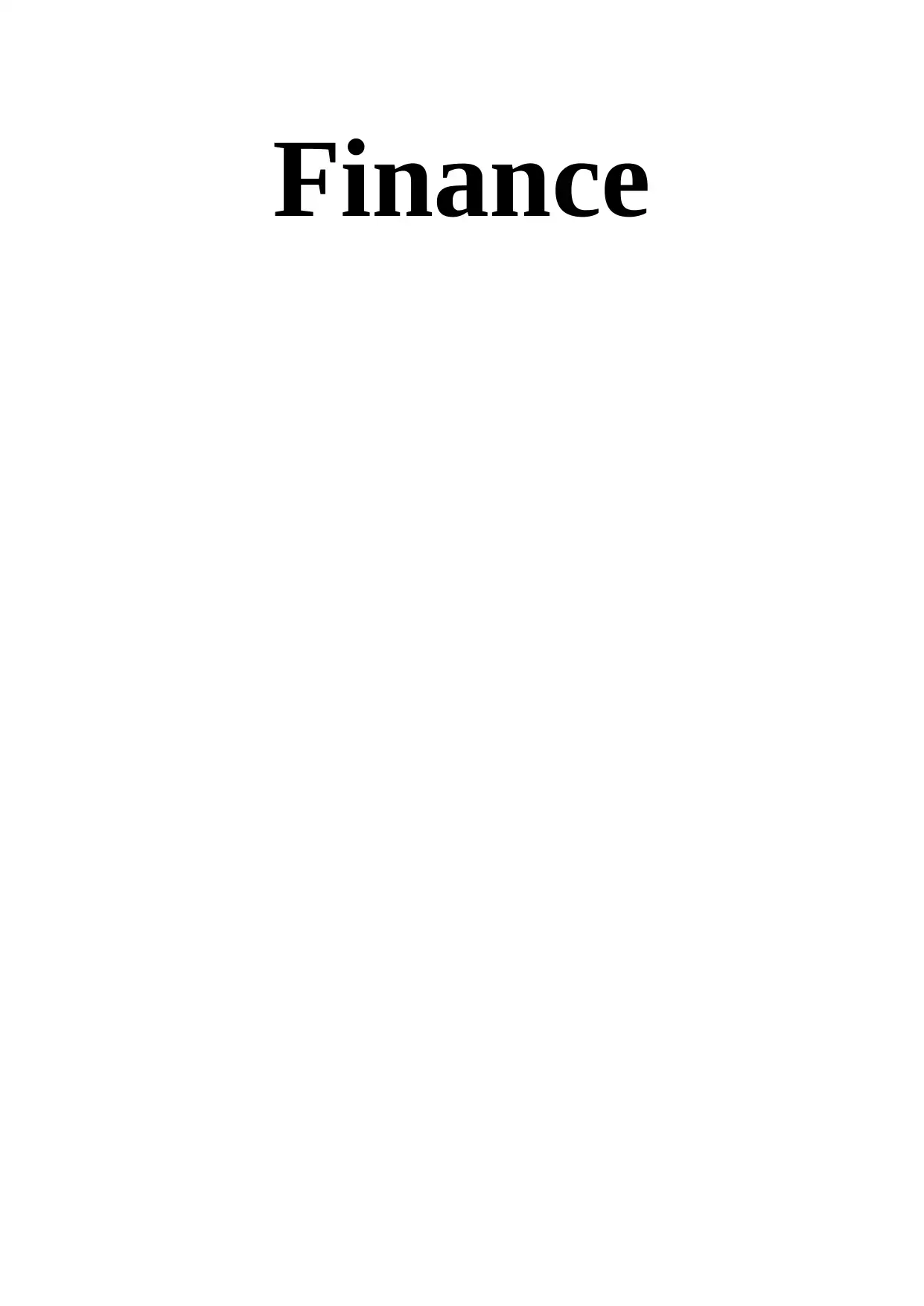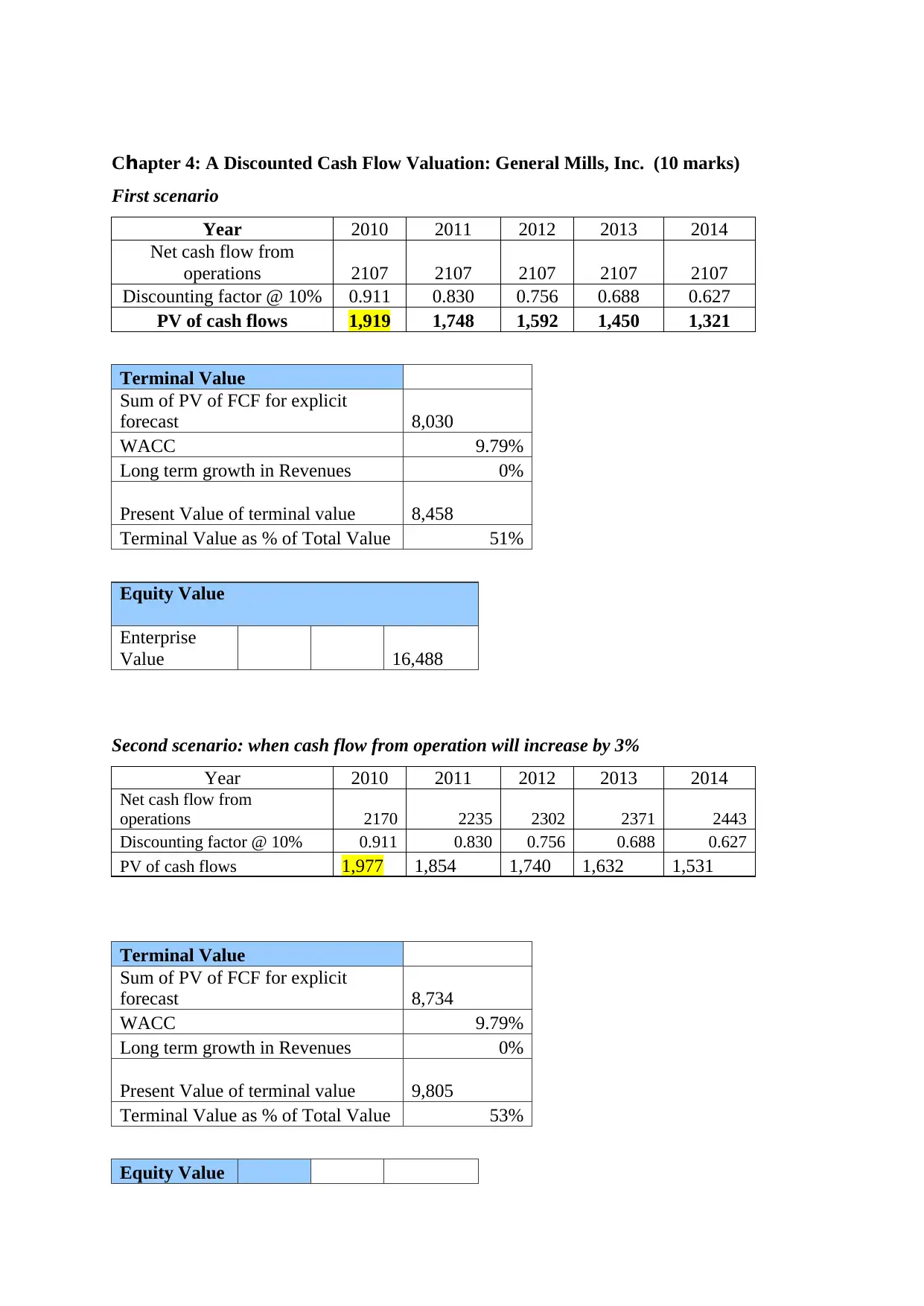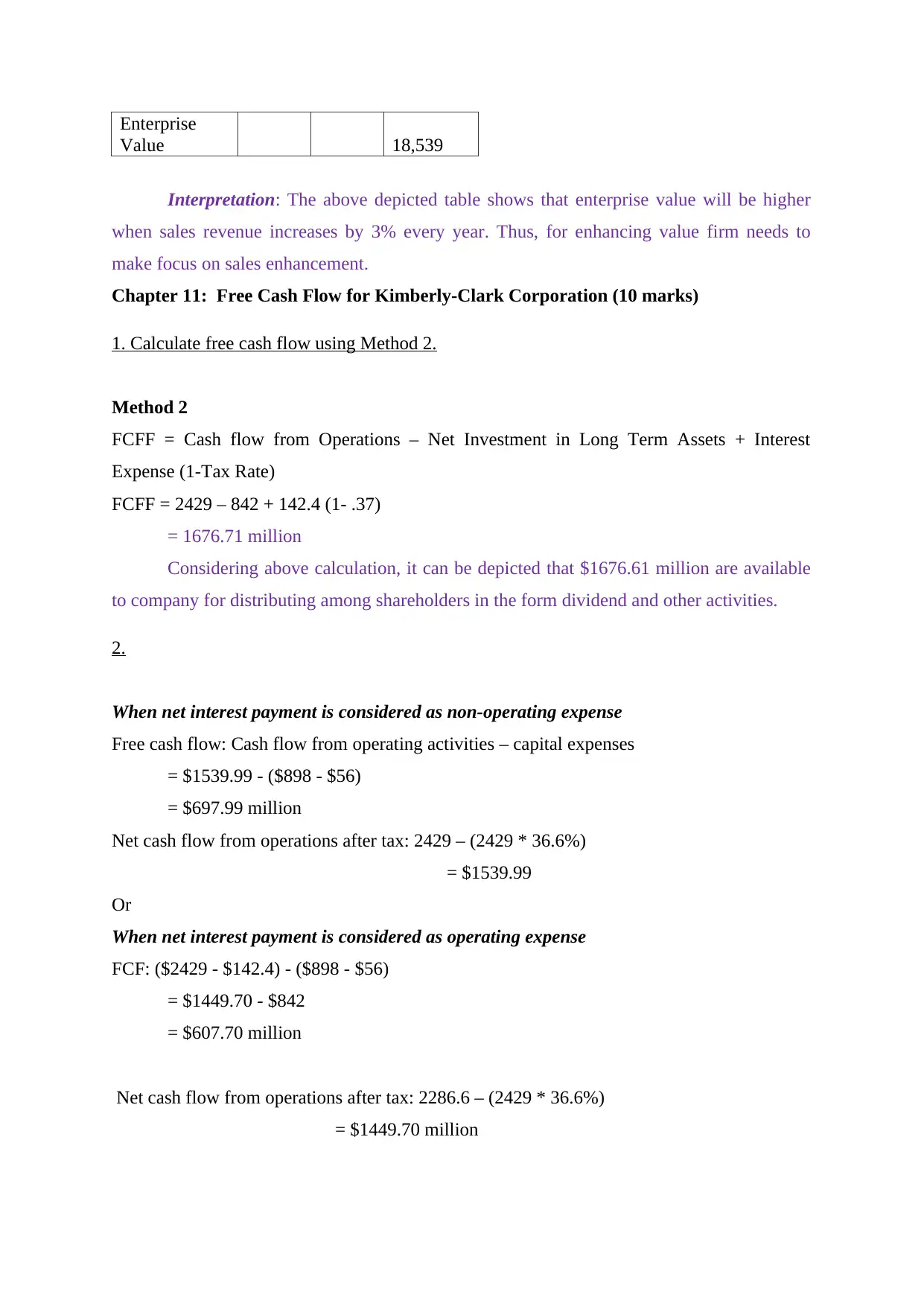Finance Assignment: Discounted Cash Flow and Free Cash Flow Valuation
VerifiedAdded on 2020/06/04
|4
|423
|76
Homework Assignment
AI Summary
This document provides a solution to a finance assignment focusing on discounted cash flow (DCF) and free cash flow (FCF) valuation methods. The assignment analyzes the enterprise value of General Mills, Inc. under two scenarios, demonstrating the impact of revenue growth on valuation. The solution calculates present values, terminal values, and the weighted average cost of capital (WACC). Additionally, it covers the calculation of free cash flow to the firm (FCFF) for Kimberly-Clark Corporation using Method 2, and explores the impact of treating net interest payments as either operating or non-operating expenses. The document offers a detailed breakdown of the calculations and interpretations, illustrating how these financial metrics are used to assess a company's financial health and potential for shareholder returns. This assignment provides valuable insights into financial modeling and valuation techniques.
1 out of 4







![[object Object]](/_next/static/media/star-bottom.7253800d.svg)